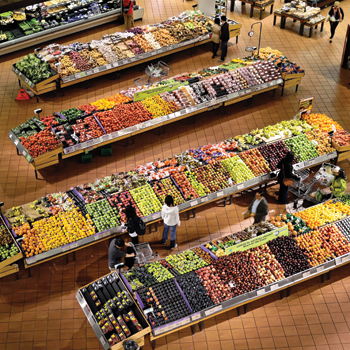การประยุกต์ใช้ระบบโลจิสติกส์ในระบบโซ่อุปทานของอุตสาหกรรมอาหาร
โดย: ดร.พงษ์ธนา วณิชย์กอบจินดา
pongtana@mge.co.th
ตลอดช่วงระยะเวลา 10 ปี ที่ผ่านมา กลุ่มผู้ผลิต กลุ่มผู้ขนส่งและกระจายสินค้า และกลุ่มผู้ค้าปลีก ได้พยายามรวมกลุ่มเพื่อที่จะสร้างพันธมิตรในระบบห่วงโซ่อุปทาน และนำเอาหลักการของการจัดการโลจิสติกส์เข้ามาประยุกต์ใช้เพื่อช่วยในการแก้ปัญหาทางด้านต้นทุนและสร้างศักยภาพในการแข่งขันทางธุรกิจโดยการเพิ่มความสามารถในการขนส่งกระจายสินค้า การลดต้นทุนสินค้าคงคลัง และกลยุทธ์ในการส่งสินค้าไปสู่ผู้บริโภคคนสุดท้าย
อย่างไรก็ตาม อุตสาหกรรมอาหารเป็นอุตสาหกรรมที่ซับซ้อน มีความยากลำบากในการบริหารจัดการ เนื่องจากอาหารเป็นสินค้าที่ขึ้นอยู่กับพฤติกรรมการบริโภคของมนุษย์ อาหารมีอายุ (Shelf life) ที่จำกัด มีอายุการจัดเก็บที่สั้นโดยเฉพาะอาหารสด อาหารบางประเภทต้องเก็บในห้องเย็นเพื่อยืดอายุ ซึ่งทำให้เกิดต้นทุนสินค้าคงคลังมูลค่ามหาศาล ดังนั้น ในบทความนี้ผู้เขียนจะนำเสนอแนวทางการนำระบบการจัดการโลจิสติกส์เข้าไปพัฒนาระบบโซ่อุปทานของอุตสาหกรรมอาหาร เพื่อสร้างความสามารถในการแข่งขันในอุตสาหกรรม
ระบบโซ่อุปทานของอุตสาหกรรมอาหารแนวใหม่
ผู้นำในการพัฒนาการค้าปลีกในอุตสาหกรรมอาหาร เช่น วอล-มาร์ต (Wal-Mart) ได้นำหลักการของการ Share Information จากผู้ซื้อคนสุดท้าย (ปลายน้ำ) ไล่จนไปถึงผู้ผลิตซึ่งเป็นอุตสาหกรรมต้นน้ำ โดยใช้ระบบอิเล็กทรอนิกส์ที่ช่วยในการเติมเต็มสินค้า (Replenishment) ซึ่งหลักการดังกล่าวของวอล-มาร์ตนี้ได้ช่วยลดต้นทุนของสินค้าคงคลังในระบบโซ่อุปทานของอุตสาหกรรมอาหาร ซึ่งสุดท้ายก็จะสามารถช่วยให้ผู้บริโภคซื้ออาหารในราคาที่ถูกลง ทั้งยังช่วยเพิ่มศักยภาพในการแข่งขันให้กับวอล-มาร์ต ให้เป็นผู้นำในระบบการค้านี้อีกด้วย
During the last 10 years, food producers, logistics service providers and distributors, and retailers have been trying to team up and form a supply-chain alliance across the food industry. Logistics management concepts have been adopted with the hope to solve high-cost problems and to reinforce competitiveness of the group by increasing efficiency in distribution, reducing inventory cost, and engaging strategy on end-consumer delivery.
Still, we have to bear in mind the complexity of food industry, due to the consumers’ behaviors as well as the spoilage nature of the product itself. Limited shelf-life of some fresh food products calls for a cold storage, which triggers the soaring inventory cost. In this article, we will be discussing the use of logistics management to develop supply chain system and boost up competitiveness across the food industry.
The New Supply Chain System of the Food Industry
The leading developer in food retail sector, Wal-Mart, has adopted the principle of “Share Information”, which collects data from the whole loop, starting from downstream consumers up to producers. With the help of electronic replenishment system, high inventory-costs of food products have been efficiently reduced, hence the lower products selling price. This effective system has contributed to Wal-Mart’s higher competitiveness that drove it up the ladder as the leader in retail system.









